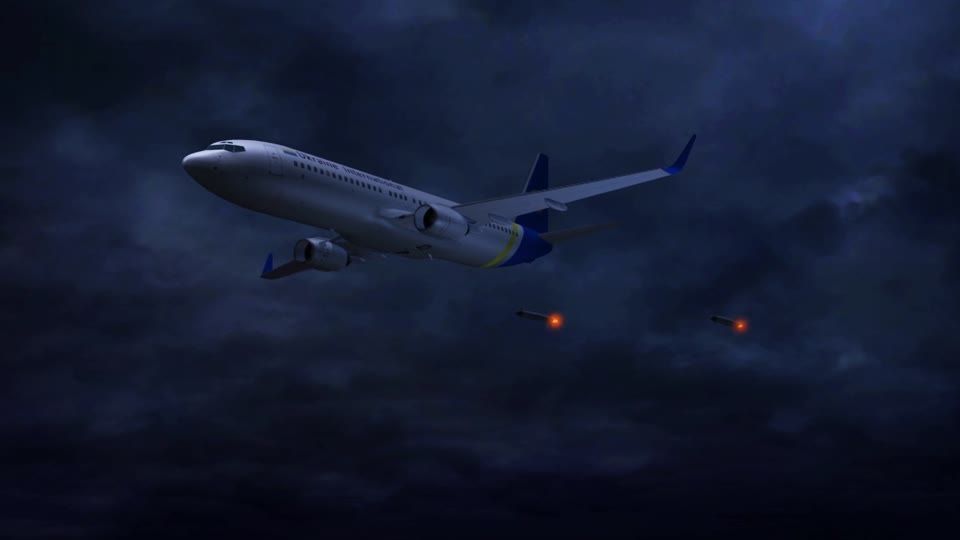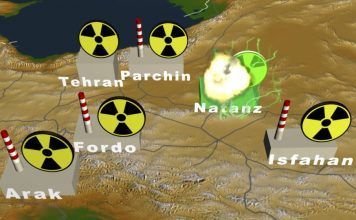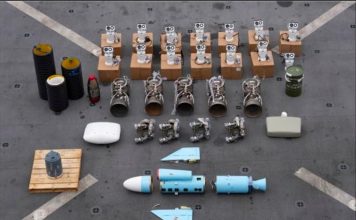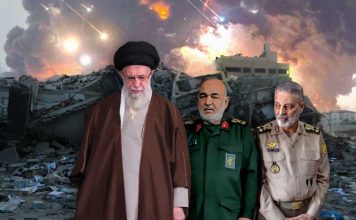On Jul. 24, the Bureau of Enquiry and Analysis for Civil Aviation Safety (BEA) concluded its examination of the two black boxes that were retrieved from the wreckage of the Ukrainian commercial Flight PS752, which was “unintentionally” shot down by the Islamic Revolutionary Guards Corps (IRGC) near Tehran’s Imam Khomeini International Airport on Jan. 8, killing all 176 people on board.
It took a week for the BEA’s laboratories to examine the flight data recorder (FDR), which preserves the recent history of a flight, and the cockpit voice recorder (CVR), which preserves the recent history of the sounds in the cockpit, including the conversation of the pilots.
The BEA, an agency of the French government, has shared its findings with all relevant parties.
According to the International Civil Aviation Organization’s (ICAO) rules and guidelines, Iran is responsible for sharing the information on the crash with the public and the media, given the incident took place on its soil.
However, at a press conference on Aug. 23, Touraj Dehghani Zanganeh, the head of the Civil Aviation Organization of the Islamic Republic of Iran (CAO.IRI), provided a selective and incomplete report on the incident to the media.
Meanwhile, the family of the victims of Flight PS752 and Canadian and Ukrainian officials have criticized Iran for not being forthcoming about the events that led to the Ukrainian passenger plane’s downing.
“What Iran published today as its Civil Aviation Organization’s report of the black boxes of Flight PS752 was yet another ridiculous display of deceit and obscurantism,” a statement in English by the Association of Families of Flight PS752 Victims said. “We have stated that no report published by the Iranian government is acceptable to us from the beginning.”
Canada’s Foreign Minister François-Philippe Champagne and Minister of Transport Marc Garneau released a joint statement on Aug. 24, saying that Iran had provided “limited and selected information regarding this tragic event.”
[aesop_image img=”https://kayhanlife.com/wp-content/uploads/2020/07/2020-07-20T123457Z_1311829809_RC20XH9NBTMW_RTRMADP_3_IRAN-CRASH-FRANCE.jpg” panorama=”off” credit=”A view of the flight recorder from the Iranian missile-downed Ukraine International Airlines (UIA) Flight PS752 Boeing 737 jet, as work begins at the BEA investigation bureau in Le Bourget, France July 20, 2020. REUTERS./ ” align=”center” lightbox=”on” captionsrc=”custom” captionposition=”left” revealfx=”off” overlay_revealfx=”off”]
“We expect the Islamic Republic of Iran to provide an answer on important questions of why the missiles were launched in the first place and why the air space was open,” the statement said. “Canada, Canadians, and most importantly, the innocent victims’ families want answers to these questions.”
“The report only mentions what transpired after the first missile strike but not the second and only confirms information that we already know,” the statement added.
In an interview with the Prague-based Radio Farda’s English edition on Aug. 24, Ukrainian Deputy Foreign Minister Yevhen Yenin said: “The data from flight recorders that Iran has revealed — finally eight months after the incident and a month after being decoded in France — proves what we thought from the beginning. The plane had no technical problems; the pilots acted according to guidelines and two missiles by [Iran’s] air defense caused its crash, although it had permission to fly from military and non-military bodies.”
“Iran must reveal the truth, however bitter it may be.” Mr. Yenin added.
What is the truth? Why has Deputy Foreign Minister Yenin highlighted that the civilian and military authorities had cleared flight PS752 for takeoff?
Why doesn’t the Islamic Republic provide any information about the second missile that hit the passenger plane? Why were the missiles fired in the first place?
Why was Iranian space open to civilian and non-military aircraft, given the country was on the verge of war?
The director of the CAO.IRI, Mr. Dehghani Zanganeh, told reporters that 19 seconds after the first missile hit the plane, the pilots’ voices inside the cockpit indicated that the passengers were alive.
Why don’t the Iranian authorities release the recording or the transcript of the pilot’s conversation with the control tower? What is the vital piece of information Ukrainian and Canadian officials have alluded to which Iranian authorities refuse to release?
Iranian authorities initially denied that a missile had hit the plane, insisting that technical faults had caused the crash. They eventually admitted that Fight PS752 was “unintentionally” downed because of a “human error.”
“The portable system which fired the missile did not accurately determine the true north after rebooting. This huge mistake caused the air defense system operator to see the plane on its radar as a target approaching Tehran from the northwestern region,” Tehran’s military Prosecutor Gholamabbas Torki was quoted by the Young Journalists Club (YJC) news agency on Jun. 29 as saying. “The air defense system operator notified the target about the relevant coordination, but did not receive a response.”
Although it has been nearly eight months since the Ukrainian passenger plane was “unintentionally” shot down, Iranian officials have yet to provide vital details about the incident. However, one thing is abundantly clear: failing to halt civilian and commercial flights and use people as “a human shield” are war crimes.
There are technical and legal components to the crash of Ukrainian Flight PS752. ICAO’s Standards and Recommended Practices (SARPS) comprises 19 Annexes. Each Annex deals with a particular subject area. ICAO’s Annex-19 (Safety Management), Annex-17 (Security), and Annex-13 (Aircraft Accident and Incident Investigation) ensure cooperation, transparency, and sharing information among the member countries in all those areas.
When a country cannot provide satisfactory answers regarding an incident, the victims’ families must rely on political, legal, and financial support to get justice for their loved ones. An expert technical team should investigate the incident. However, the lack of a dedicated technical investigative team would harm the victims’ families and benefit the Islamic Republic.
Despite the Iranian authorities’ threats and intimidation tactics, many families have been unrelenting to find answers about why the IRGC units fired two missiles at the passenger plane, causing their loved ones’ tragic deaths. Some families, who support the Islamic Republic or do not wish to lock horns with the authorities, prefer to reach a financial settlement with the Iranian government.
A person who lost a family member in the crash told Kayhan Life: “We know little about the other families. However, most families want answers and demand justice. Receiving financial compensation is not their priority.”
An informed military source told Kayhan Life: “BEA’s findings confirm comments by the CAO.IRI’s director [Zanganeh] that pilots’ voices inside the cockpit could be heard 19 seconds after the first missile hit the plane. However, we did not have to wait this long for the information extracted from the FDR to be released. The voice recording of the cabin exists in the archives of CAO.IRI. A copy of the recording was sent to the Iranian Armed Forces.”
The air defense HQ must approve each flight before it is cleared for takeoff by the Imam Khomeini International Airport’s control tower. Ukrainian commercial Flight PS752 had gone through all three rigorous stages of the process before being placed in the runway’s takeoff queue.
The air defense system had been reportedly positioned in the south of Tehran 24 hours earlier. During that time, several flights had taken off with no problem; the system had not identified them as a “hostile target.” So, saying that the portable system did not accurately determine the true north after rebooting is a lame excuse.
Since the incident, CAO.IRI has been restructured. The Iranian authorities have reportedly interviewed the air traffic controllers who were on shift when the incident occurred. However, it is unclear if the world will ever know the truth about the tragic crash of Flight PS725 that resulted in the loss of so many innocent lives.
This article was translated and adapted from Persian by Fardine Hamidi.








